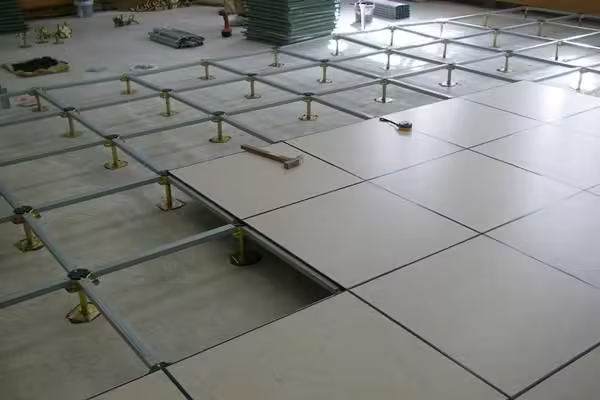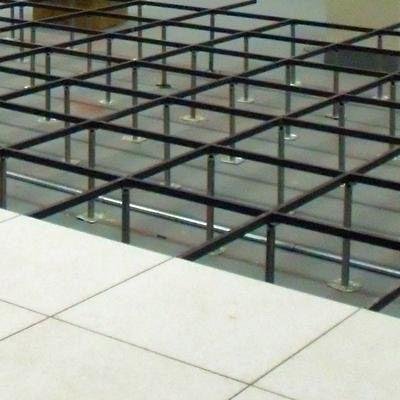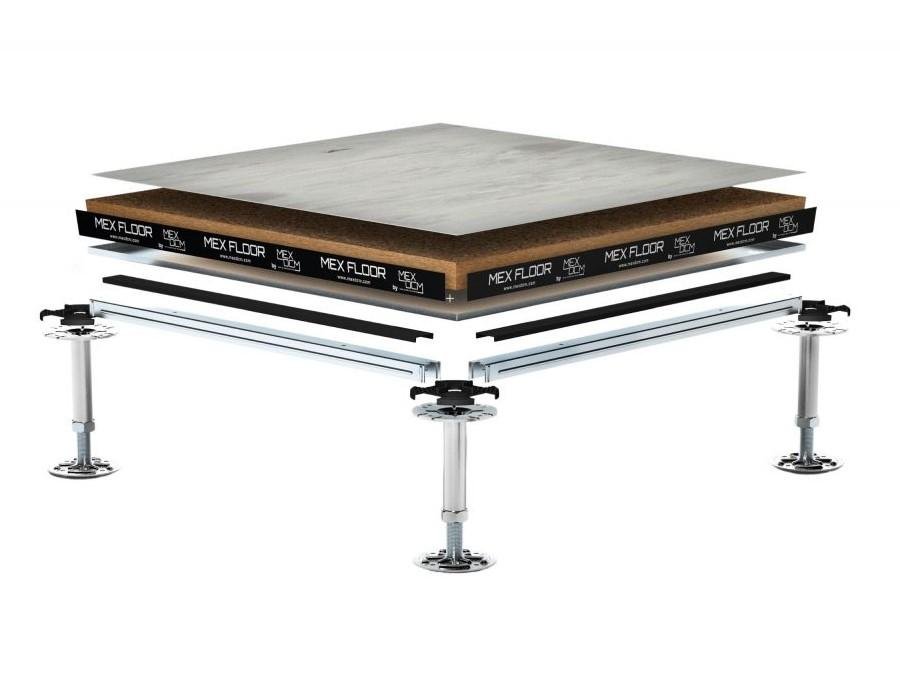
In a world where design and functionality intertwine, the concept of a raised floor emerges as an unsung hero, quietly championing efficiency and safety. Whether in commercial settings or residential spaces, this architectural feature holds the potential to transform the very foundations of our environments. Imagine a realm where rising dampness, tangled wires, and disorganized cables are not just addressed, but entirely prevented. As we delve deeper into the practical implications of a raised floor, we uncover a myriad of challenges that could be effectively mitigated, offering both peace of mind and enhanced utility. Join us as we explore the intricate relationship between elevation and innovation, and discover how a simple shift in perspective can lead to profound improvements in our daily lives.
Table of Contents
- Understanding the Advantages of a Raised Floor Design
- Mitigating Risks: How a Raised Floor Can Eliminate Potential Hazards
- Enhancing Efficiency: The Role of Raised Flooring in Data Management
- Recommendations for Implementing a Raised Floor Solution
- Q&A
- Final Thoughts

Understanding the Advantages of a Raised Floor Design
One of the primary benefits of incorporating a raised floor design is the enhanced management of airflow. By creating a void space between the structural slab and the floor finish, this system facilitates the efficient distribution of air throughout a building. This leads to improved climate control and energy efficiency. More specifically, the advantages include:
- Enhanced thermal comfort: The space allows for better temperature regulation, minimizing hot and cold spots.
- Improved air quality: Adequate airflow can help mitigate humidity and prevent mold growth.
- Customizable ventilation: Adjusting air supply becomes easier as ducts can be strategically added or modified.
Another noteworthy aspect is the flexibility it offers for future modifications. In environments like offices, educational institutions, and data centers, the ability to rapidly adapt space usage is crucial. By using a raised floor, organizations can effortlessly accommodate changes in technology and infrastructure. Key features include:
| Flexibility Advantages | Description |
|---|---|
| Easy cabling management | Avoids clutter by enabling organized routing of electrical and data lines. |
| Reconfigurable spaces | Allows for quick redesign of office layouts without major renovations. |
| Scalability | Supports growing technology demands by easily accommodating new equipment. |

Mitigating Risks: How a Raised Floor Can Eliminate Potential Hazards
Implementing a raised floor system significantly minimizes various hazards that may arise in both commercial and industrial environments. By creating an elevated platform, this design allows for improved airflow and better management of cables and conduits, effectively reducing tripping hazards and potential fire risks. Some advantages of utilizing a raised floor include:
- Improved Accessibility: Easy access to electrical and data cabling increases safety by reducing clutter on the floor.
- Enhanced Airflow: Elevated surfaces facilitate better ventilation, which prevents overheating of equipment.
- Reduced Risk of Water Damage: A raised floor can help protect sensitive equipment from water leaks, especially in areas prone to flooding.
Moreover, the adaptability of a raised flooring system allows rapid modifications to be made without disrupting existing operations. This means businesses can respond to changes in technology or space utilization while maintaining an environment that prioritizes worker safety. The key benefits are illustrated in the table below:
| Benefit | Impact on Safety |
|---|---|
| Modular Design | Allows for easy reconfiguration, reducing accidents during upgrades. |
| Noise Reduction | Minimizes distractions, helping maintain focus and thus lowering accident rates. |
| Ease of Maintenance | Facilitates quicker repairs and inspections, reducing the likelihood of oversight in safety checks. |

Enhancing Efficiency: The Role of Raised Flooring in Data Management
Raised flooring systems serve as a vital infrastructure solution that significantly enhances data management and overall operational efficiency in various environments. By elevating the floor, these systems create a versatile space that not only accommodates intricate wiring and cabling but also facilitates effective airflow management. This is crucial in data centers where temperature regulation is essential for preventing overheating of equipment. Furthermore, the modular design allows for easy access to cables and systems, enabling swift adjustments and maintenance without disrupting everyday operations. The benefits include:
- Improved Air Circulation: Enhanced cooling efficiency reduces the risk of equipment failure.
- Flexible Layouts: Adaptable to changing technological needs and workflows.
- Easy Maintenance: Quick access to wiring and systems minimizes downtime.
Moreover, raised flooring can significantly reduce the environmental impact of data centers by improving energy efficiency. With better airflow management and the possibility of utilizing cold-aisle containment strategies, businesses can achieve lower energy costs and a reduced carbon footprint. Investing in raised flooring translates to long-term savings and sustainability, making it an attractive proposition for organizations aiming to optimize their data management practices. Consider the following advantages:
| Feature | Benefit |
|---|---|
| Effective Cable Management | Reduces clutter and potential hazards. |
| Customizable Spaces | Enhances flexibility for future expansions. |
| Soundproofing | Minimizes noise pollution in work environments. |

Recommendations for Implementing a Raised Floor Solution
When considering the implementation of a raised floor solution, it’s essential to evaluate the specific needs of your space. Conduct a thorough assessment of the existing infrastructure, paying close attention to any potential obstacles that could hinder installation. Engage with professionals who specialize in raised flooring to gather insights and recommendations tailored to your facility. This collaboration will help streamline the process and ensure that the solution aligns well with your operational goals. Key factors to consider include:
- Load-bearing capacity: Ensure the floor can support your equipment.
- Cable management: Optimize pathways for electrical and data cabling.
- Ventilation: Consider airflow and cooling requirements for your machinery.
- Future scalability: Plan for potential expansions and modifications.
To facilitate an effective installation, it’s also crucial to choose the right materials that match the needs of your environment. Selecting high-quality raised floor panels can lead to long-term benefits. An initial review of different panel types may include:
| Panel Type | Benefits |
|---|---|
| Steel | Durable, strong, and fire-resistant. |
| Vinyl | Cost-effective and easy to maintain. |
| Wood-core | Excellent for sound absorption and aesthetic flexibility. |
Furthermore, establishing a regular maintenance schedule is imperative after installation. This practice ensures that any necessary adjustments are timely and that the raised flooring continues to perform optimally. By monitoring the condition of the floor and any integrated systems, you’ll be able to prevent potential issues that could disrupt operations. Engaging your team in the upkeep process can foster a culture of responsibility and vigilance, further enhancing the longevity of your raised floor investment.
Q&A
Q&A: The Implications of a Raised Floor
Q1: What is meant by a “raised floor”?
A1: A raised floor refers to an elevated flooring system that creates a space between the original floor and the new surface. This gap can be utilized for various purposes, such as housing electrical wiring, ventilation systems, and piping, promoting better organization and ease of maintenance.
Q2: Why are raised floors important in certain environments?
A2: Raised floors are particularly significant in environments like data centers, offices, and laboratories where managing wiring and maintaining airflow are crucial. The elevation reduces clutter, facilitates better cooling for equipment, and provides easy access for upgrades or repairs.
Q3: What problems can a raised floor help prevent?
A3: Raised floors can help prevent several issues, including overheating of sensitive equipment due to improved air circulation, tripping hazards from visible wiring, and inefficiencies in power distribution. They also mitigate the risks of flooding by providing a buffer against water ingress.
Q4: Can a raised floor improve safety in a workspace?
A4: Absolutely! By hiding potentially dangerous cables and pipes beneath the floor, raised flooring significantly lowers the risk of accidents. Additionally, enhanced airflow helps prevent equipment failure, further ensuring a safer working environment.
Q5: What other benefits come with installing a raised floor?
A5: In addition to safety and organization, raised floors can offer flexibility in design and layout. As technology evolves or workspace needs change, modular raised flooring allows for easy adjustments without extensive renovation. This adaptability can lead to cost savings over time.
Q6: Are there any downsides to raised floors?
A6: While raised floors present numerous benefits, they can also come with challenges. Installation can be costly and time-consuming, and certain materials may require specific maintenance to avoid wear and tear. Additionally, in some cases, they can reduce ceiling height, which might be a consideration in planning.
Q7: How can one determine if a raised floor is necessary for their facility?
A7: Assessing the current layout, considering future needs, and evaluating the existing infrastructure are vital steps. If your facility faces issues like high equipment failure rates, disorganized cabling, or significant air circulation challenges, it may be time to explore the benefits of installing a raised floor.
Q8: In what types of buildings are raised floors most commonly found?
A8: Raised floors are commonly found in commercial buildings such as office spaces, data centers, healthcare facilities, and manufacturing entities. They are also seen in educational institutions where modern technology infrastructure is prevalent, supporting the seamless integration of electrical and data systems.
Q9: What industries could benefit from the preventive measures of a raised floor?
A9: Several industries can benefit from raised floors, including IT and telecommunications, pharmaceuticals, logistics and distribution, and even hospitality, where aesthetics and functionality need to coexist gracefully. Each industry can leverage the organizational and safety enhancements a raised floor offers.
Q10: Is a raised floor a good investment for long-term operations?
A10: Yes, while the initial investment may be higher, the long-term benefits often outweigh the costs. Improved efficiency, reduced maintenance expenses, enhanced safety, and the ability to adapt to future technologies make raised flooring a prudent choice for many organizations looking to future-proof their environments.
Final Thoughts
the concept of a raised floor presents a compelling solution to various challenges faced in both residential and commercial spaces. By elevating the ground beneath our feet, we can mitigate risks associated with moisture, manage clutter with greater ease, and improve air circulation—all while enhancing the aesthetic appeal of our environments. As we navigate the intricacies of design and functionality, it becomes increasingly clear that an elevated approach may very well be the key to a more resilient and efficient future. As we ponder the potential of what lies beneath, let us not forget the profound impact that a simple elevation can have, transforming spaces and safeguarding against the unforeseen.

